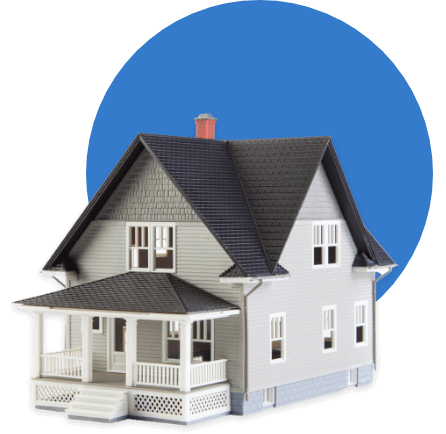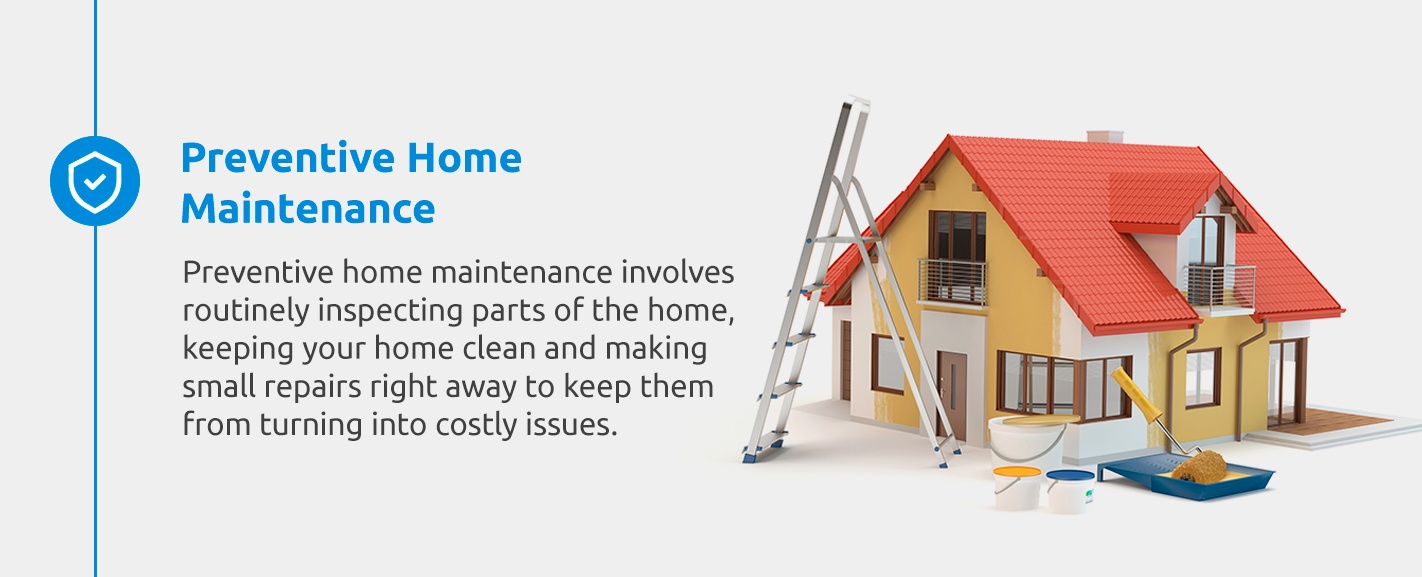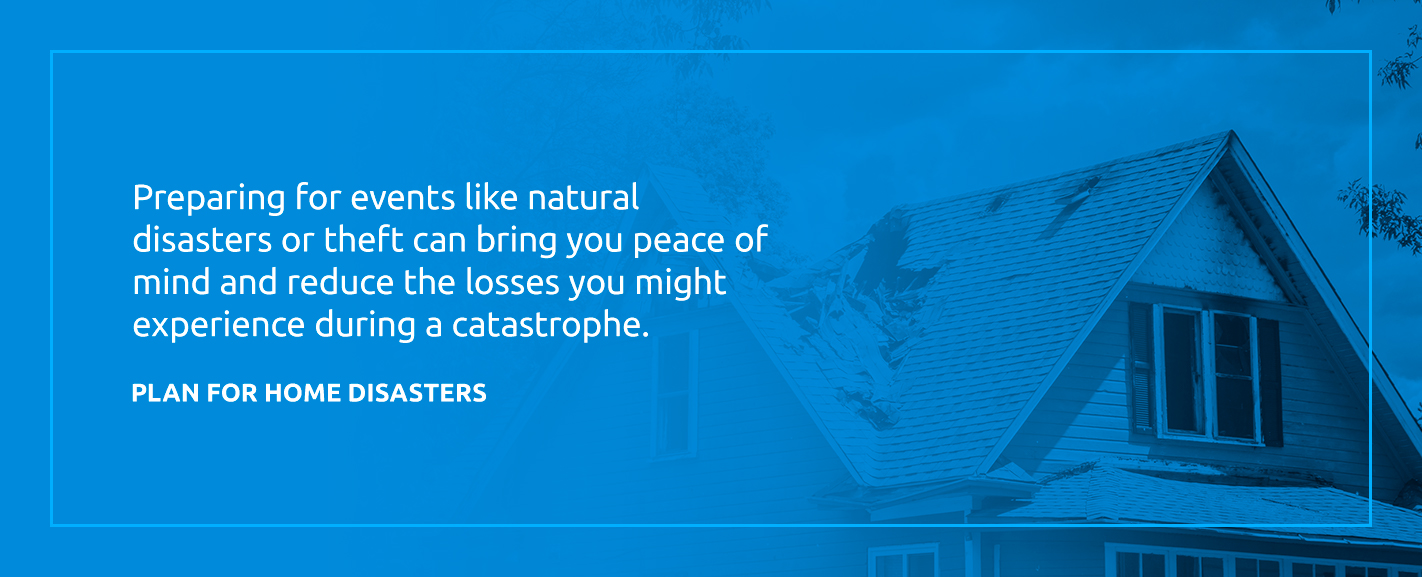
According to a 2019 report by the National Association of REALTORS®, 33% of all home buyers were first-time home buyers. Home maintenance can feel daunting if you’re a first-time homeowner because you may not know where to begin. Also, you still may need to familiarize yourself with your home’s systems so you can maintain it properly and keep it in great condition. This includes the plumbing, electrical and heating, ventilation and air conditioning (HVAC) systems. All of this may be entirely new for you, but you don’t need to be an expert to take care of your property. All it takes is a little maintenance know-how — and knowing when to call a professional.
Even if you have experience owning a home, you don’t want to skip maintenance tasks or assume things are sufficient without checking them first. It never hurts to learn your home inside and out, whether you just moved in or have been living there for years.
Before you tackle big projects that may not be a priority, like converting the basement into a movie theater, be sure to complete preventive tasks first. In this chapter, we’ll cover some preventive maintenance tips to stop trouble before it starts.
Preventive maintenance is any task designed to protect your home from damage and major repairs or replacements. For example, by making certain the gutters and downspouts are clog-free, you ensure rainwater is directed away from your home and doesn’t pool at the foundation or sit on the roof. Water can lead to a range of problems from mold to cracks, and potentially thousands of dollars in repairs. Fortunately, you don’t have to let a clogged gutter lead to a drained savings account. Preventive home maintenance involves routinely inspecting the gutters and other parts of the home, keeping your house and yard clean and making small repairs right away to keep them from turning into costly issues.

Preventive home maintenance can become a part of your routine, and it helps to use checklists to guide you through each year. You’ll also want to keep a record of any maintenance performed along with related receipts. That way, you can easily track what’s already been done and what needs to be completed.
It’s understandable — most people would rather spend their time and money taking a vacation than dealing with home maintenance. Even though it may not seem fun to spend a Saturday afternoon re-caulking the bathroom, it’s crucial to protect your home from damage. Here are reasons to keep all parts of your house well-maintained and address problems as soon as they appear:
According to the National Oceanic and Atmospheric Administration (NOAA), the United States experienced 69 billion-dollar disaster events from 2015 to 2019. No one wants to think about tornadoes or floods damaging their home, but severe weather events happen and are sometimes unpredictable. It’s critical to be prepared before disaster strikes.

Likewise, you’ll want to have a plan to respond to disasters that can occur within the home, such as a fire. It only takes 30 seconds for a small flame to turn into a fire and only five minutes for a house to be consumed by flames. Therefore, you won’t have much time to think if something catches on fire — you’ll need to know what to do immediately.
Planning for a home disaster should be part of your overall maintenance plan. This may mean ensuring every bedroom has a working smoke detector or choosing the right home insurance policy. You’ll also need to consider security and liability risks as you maintain your home and make sure the locks on doors and windows work and pathways are free of ice or other tripping hazards.
Overall, preparing for events like natural disasters or theft can bring you peace of mind and reduce the losses you might experience during a catastrophe. The first step is to know the risks in your area and then purchase insurance — including flood insurance. Other ways to prepare for a disaster include:
Your maintenance plan should be customized to suit your home and needs. Here are tips to help you get started:
If you’re not sure where to start when creating a home maintenance plan, pay attention to the essential parts of your home first. As a homeowner, you’ll want to keep a close eye on four main elements. These include:
You’ll also want to understand your home’s electrical and plumbing systems, at least on a fundamental level. For example, make sure you know where your home’s main water shut-off valve is located in case there’s a leak or you need to complete a DIY plumbing project. Usually, the main valve is located in the basement and is shaped like a wheel or lever. Turning this valve off will completely stop water from entering your home, so you can make a repair or control a burst pipe before the plumber arrives.
When you keep essential parts of your home in mind, you can develop a maintenance plan to keep your house safe and in great shape.
While many of your home’s maintenance needs will be universal, you’ll still want to take a walk around and look for unique parts of your home that need care. Consider things like the age of the house, the materials it’s constructed with and any special features like a pool or skylights. All aspects of your home need to be maintained and must be considered when you create your plan.
Also, take the local weather into account. If you’re a Missourian, for instance, you’ll need to consider how all four seasons and weather events like heavy rain and tornadoes can impact the inside and outside of your home, and how you can protect your property year-round.
Cover every area of your property and jot down maintenance tasks along the way.
Use your general maintenance list to create checklists and organize each one by frequency, such as weekly, monthly and yearly. Set automatic reminders for yourself in your phone or mark a calendar, so you follow your plan. Keep a record of completed tasks and store any related receipts in the same place. We’ll share checklists in this guide to help you create your own lists.
According to Nerdwallet’s Home Improvement Report, about a third of homeowners did not have any money saved for home repairs, but 44% experienced an unexpected repair within the first year of owning their home. You can help reduce the burden of a surprise repair by setting aside funds each month for maintenance tasks and emergencies. Even if you cannot save a lot, anything is better than nothing, and it’ll add up over time.
Several factors will impact how much it costs to maintain your home, such as the age, size and current condition of your property. It’s ideal to budget for routine maintenance tasks and repairs and have a separate fund for emergencies. Emergency funds should be equal to three to six months of living expenses to compensate for an unexpected income loss. Your home maintenance budget should be at least 1% of your home’s value. Divide by 12 to get a monthly budget.
So, if your home is worth $150,000, you’ll want to set aside at least $1,500 a year for home maintenance, or around $125 a month. However, this is just a general rule, and the amount could be higher if your property needs a lot of work or you own an older home.
It’s also important to note that your monthly maintenance budget is for preventive tasks and not for making home improvements. You’ll want to know your home inside and out to get a better idea of how much you’ll need to save for maintenance each year. Also, don’t forget the importance of dealing with issues immediately, because the longer you let things go, the more damage they can do in the end. It helps to think of the money you save for maintenance and repairs as an investment and not payment for another bill.